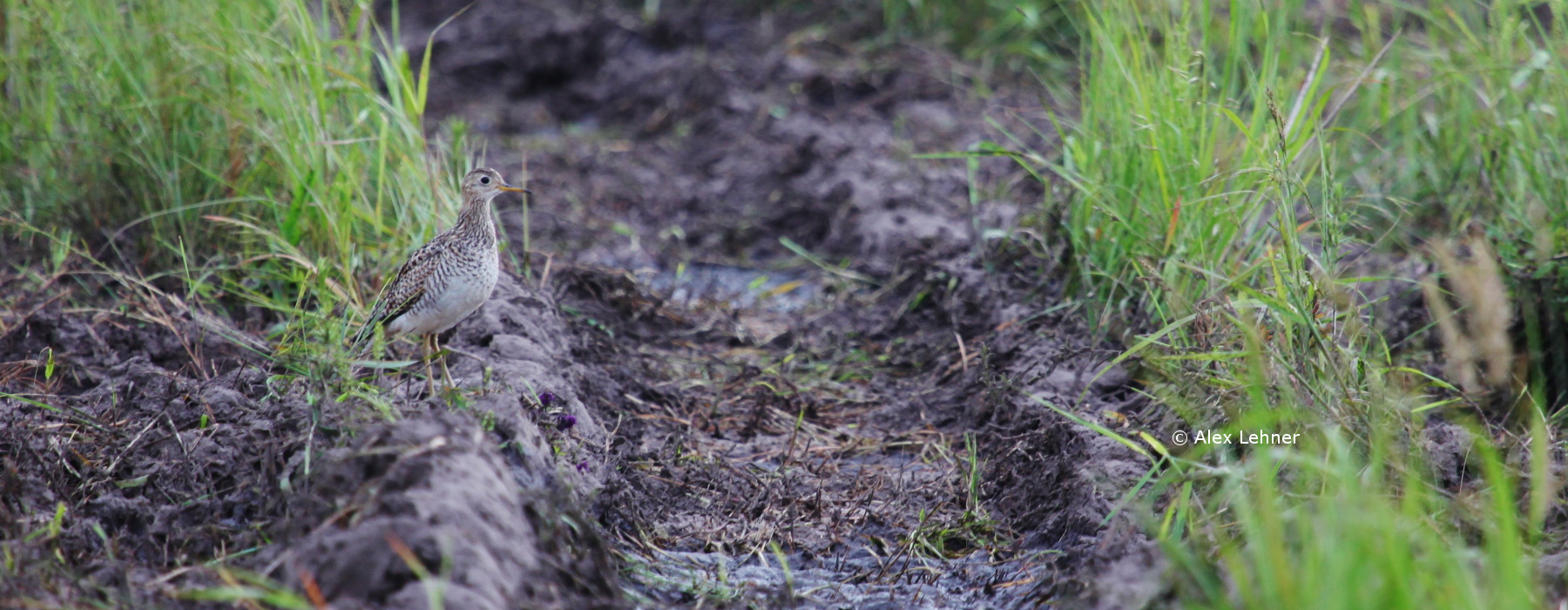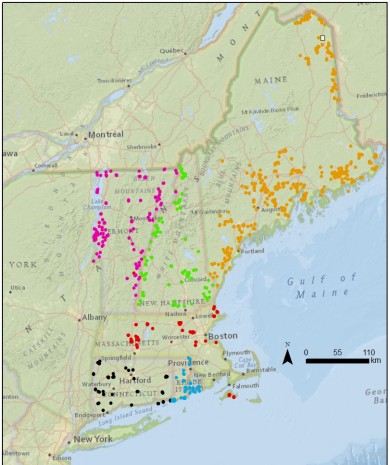Grassland birds in New England and the rest of North America have experienced substantial declines—likely due to habitat loss derived from reforestation (especially in New England) and the intensification of agricultural practices.
To better document the distribution of grassland birds across the six New England states and New York, Mass Audubon surveyed 1,145 grassland sites (e.g., hayfields, pastures, and municipal airports) in the late 1990s. Observers netted >10,000 observations of grassland birds, including Northern Harriers, Bobolinks, and Savannah Sparrows—a monumental surveying effort. In 2014-2015 VCE, Mass Audubon, and the University of Delaware organized a resurveying effort at 495 of those grassland sites across New England. Our goals were twofold: to understand how grassland bird distributions have changed in our region since the 1990s and to connect with grassland landowners to discuss opportunities for grassland bird conservation on their properties.
In 2015, we conducted the most comprehensive survey of grassland birds across New England since the 1990s. Observers conducted 1,356 point counts at 700 sites.
We found that 8 of the 9 species we surveyed were detected at an average of 41% fewer sites in 2015 compared to the 1990s. The ninth species, Upland Sandpiper, was found in only 4% of the sites where they were previously found. Eastern Meadowlark site occupancy had declined by 76%. Losses of grassland birds from sites were most severe in Connecticut and Massachusetts. Our extensive surveys provide concrete evidence for declines in grassland bird populations in New England. Our data provide another benchmark for the changing grassland bird populations in New England, and elucidates changes in their spatial distribution in New England.


